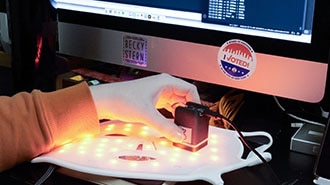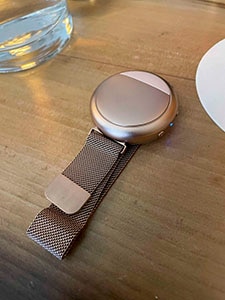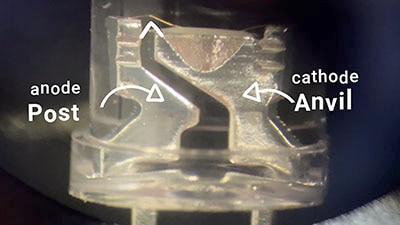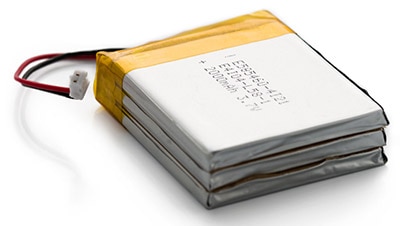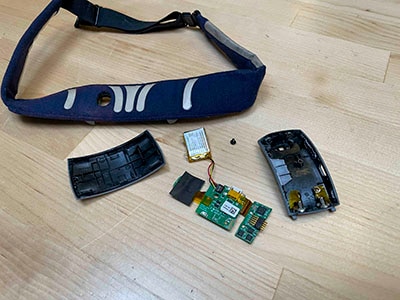Teardown of CurrentBody Series 2 and Shark Cryoglow LED Therapy Masks
2025-10-19 | By bekathwia
Today, we’re taking a look inside two new LED red light therapy masks, the CurrentBody Series 2 and the Shark Cryoglow.
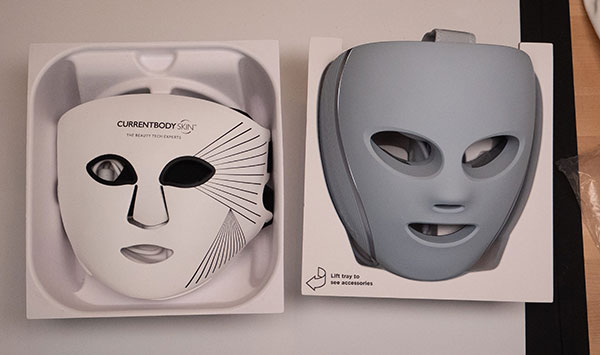
Tools used in this teardown:
First up is the CurrentBody Series 2 mask. It’s flexible like the previous version, but also more contoured to the shape of the face, especially under the chin.
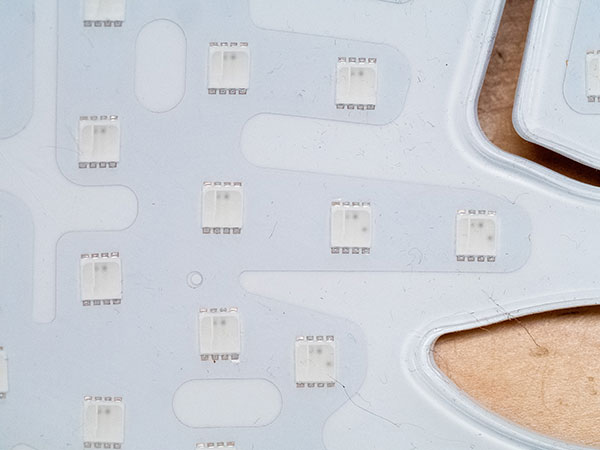
The series 2 also has a few more IR LEDs in another wavelength, in addition to the red and near infrared LEDs present in both versions.
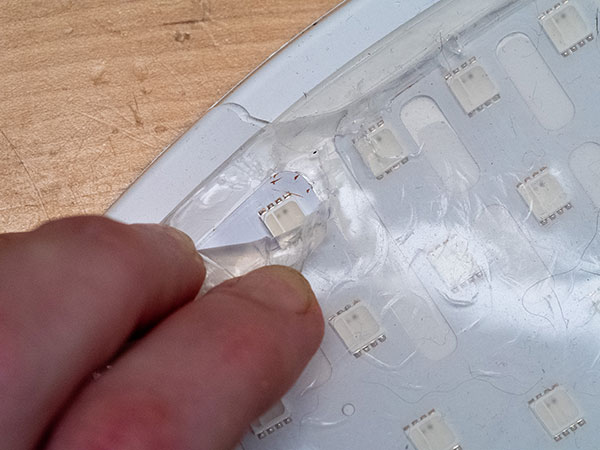
I quickly learned that what worked in my teardown of the series 1 mask was not going to work for the series 2. The outer layer, flex PCB, and inner layer are all fused together into one solid piece. So, try as I might to separate them, I didn’t make very much progress at all.
So, I switched my focus to the controller, where I found a battery and a circuit board.
I took a closer look at the electronics inside with my channel’s favorite electrical engineer, David Cranor.
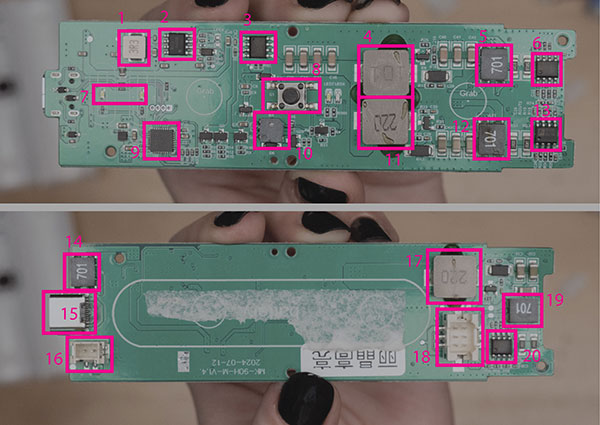
Here are all the components we could identify on the CurrentBody Series 2:
- Unknown 3R3
- Semi-High BC911 li-ion battery charger
- Alpha & Omega Semiconductor AO4409 P-MOSFET
- Unknown 101
- 12, 14, 19: Unknown 701
- 13, 20: Feeling Technology FP7208 voltage mode boost controller for LED driver
- LEDs
- Tactile switch
- Nation N32G030 32-bit Cortex®-M0 microcontroller
- Buzzer
- 17: Unknown 220
- Unknown 701
- Feeling Technology FP7208 voltage mode boost controller for LED driver
- Unknown 701
- USB-C connector
- Battery connector
- Unknown 220
- Mask cable connector
You can explore the CT scan of this device on Lumafield:
Next, let’s take apart the Shark Cryoglow. Its controller has a color screen, and in addition to its LEDs, also has undereye cooling pads, created using Peltier coolers. If you remember when I took apart the Embr Wave, that heating and cooling wearable, you’ll know it’s pretty unusual to see these in battery-powered devices because they use a lot of power and also generate heat. I’ll admit it does feel really nice, though!
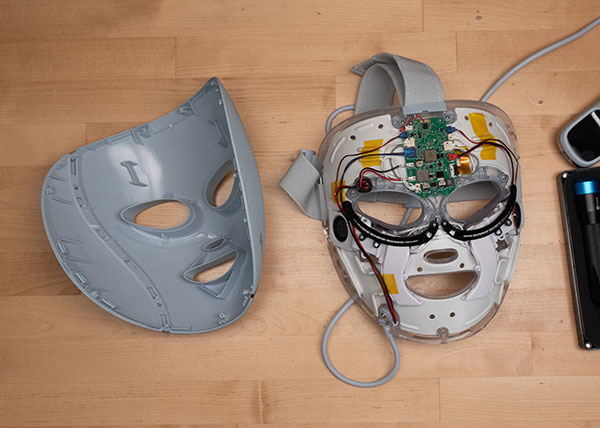
The front cover of the shark is held on by five screws distributed around the edge. The bottom center one, at the chin, is covered by a soft rubber stopper, and the others are covered by hard plastic caps that were significantly harder to remove. I used a combination of nippers to dig in and an awl to pry out.
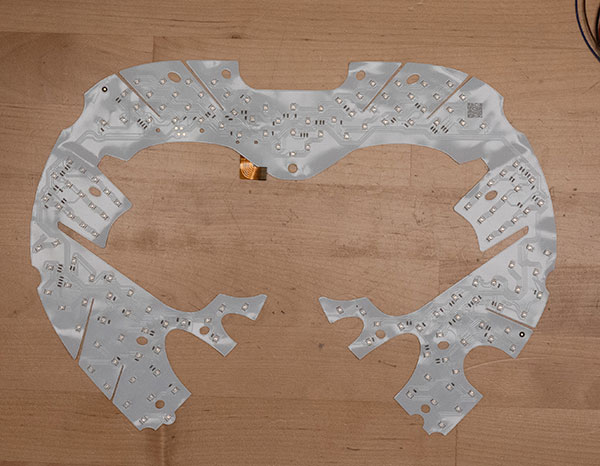
Once I removed the front shell, the inner wiring of the mask became visible. There’s a circuit board in the forehead area, and everything else plugs into it. I systematically removed the components in the order they were most apparent to me: the front LED fixture, the cheek fans, the circuit board, and finally, the flex PCB with all the LEDs on it. Then I removed one of the undereye coolers and the pads from the inside of the mask. There’s a capacitive touch sensor in the forehead pad.
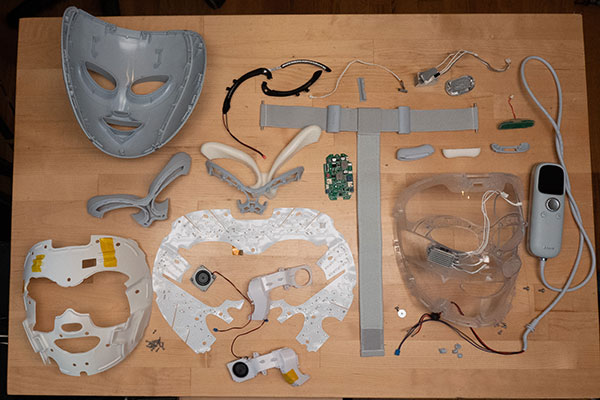
No wonder this thing is so heavy; it’s got more than a dozen metal screws loaded up inside.
The controller has two PCBs, two batteries, and a small screen.
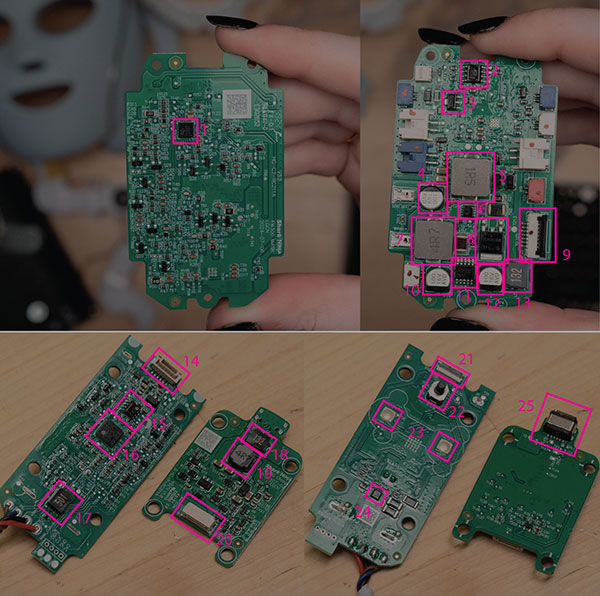
Here are the components we could identify on the Shark Cryglow:
- Cmsemicon CMS8S6990 8-bit microcontroller
- Semtech SC425M negative voltage hotswap controller
- Unknown 7533
- 10, 12: Unknown 100 16V AVD
- Unknown IR5
- Sourcing Semi D40P03HL P-channel MOSFET
- Unknown 4R7
- Silicon Power Schottky Diode
- FFS connector
- Unknown 100 16V AVD
- Chipstar CS50363E high-efficiency step-up DC-DC converter
- Unknown 100 16V AVD
- Unknown 132
- Connector
- Unknown GDPJ2443 25Q54ET1G C117797 (GigaDevice maybe)
- GigaDevice GD32W515 Arm® Cortex®-M33 core microcontroller with wifi
- Unknown 501
- Unknown 132
- Unknown 497
- Connector
- Screen connector
- Dial/switch
- Dome switches
- Unknown CJAB 25P03 ZG
- USB-C connector
You can explore the CT scans of this device on Lumafield:
I did manage to put the Shark back together, but turns out the screen was damaged at some point, because only a bit of it was working. This was enough for me to activate the therapy modes, though, to prove that the mask does indeed still work after I put it together. Maybe I can find a replacement for this screen.










